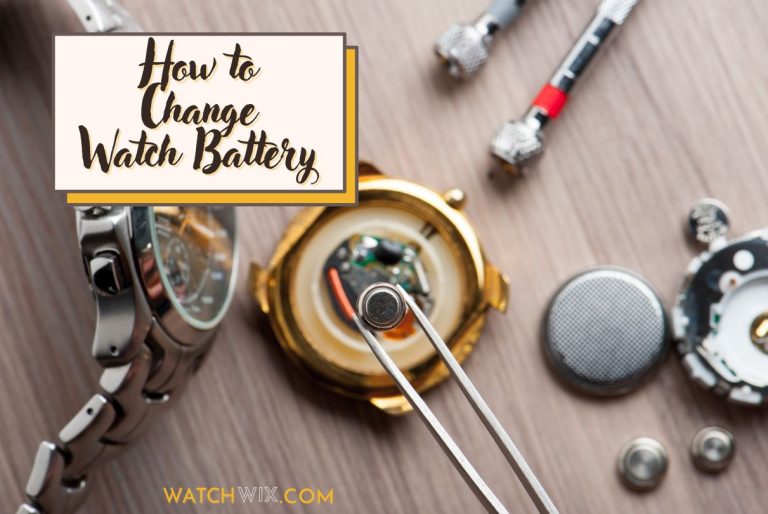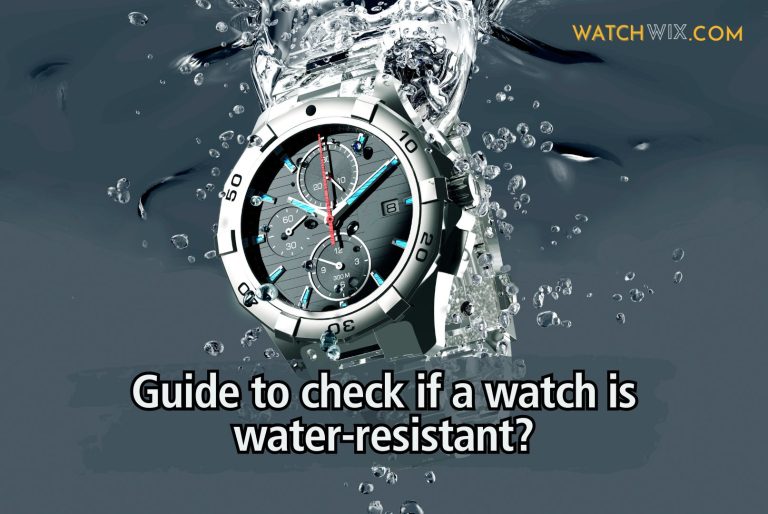How much does it cost to polish a watch? | WatchWIX Guide
Polishing a watch is a delicate process that can restore its original shine and remove unsightly scratches, but many watch owners are unsure about the costs involved. In this comprehensive guide, we will delve into the various factors affecting the cost to polish a watch, providing you with a typical price range for this service. We’ll also explore why polishing your watch is beneficial, how to find a reputable service provider, and the potential risks involved.
Coverage
- Factors Affecting the Cost to Polish a Watch
- Typical Price Range to Polish a Watch
- Why should I Polish my Watch?
- How to Find a Good Service Provider to Polish My Watch?
- Will My Watch Damage After Polishing?
- Things to be Careful Before Polishing a Watch
- How Frequently Should I Polish My Watch?
- Frequently Asked Questions (FAQs)
Factors Affecting the Cost to Polish a Watch
The cost to polish a watch can vary widely based on several factors, including the type of watch, the extent of the work needed, and the location or reputation of the service provider. Here is a breakdown of what you can typically expect,
- Type of Watch
- Luxury Watches – Polishing a high-end luxury watch (such as Rolex, Omega, Cartier, or Patek Philippe) usually costs more due to the precision required and the materials involved.
- Standard Watches – Mid-range brands (like Seiko, Timex, Citizen, or Tissot) generally cost less to polish compared to luxury brands.
- Extent of Polishing Needed
- Light Polishing – Minor scratches and surface cleaning can be relatively inexpensive.
- Full Polishing – Deep scratches, dents, or a full restoration will cost more due to the additional time and effort required.
- Service Provider
- Authorized Service Centers – These authorized service centers often charge premium rates but offer specialized knowledge and warranty protections. Established and reputable watchmakers or service centers might charge a premium for their services.
- Independent Watchmakers – These independent watchmakers (like Jewellery Shops, Watch Shops) usually offer more competitive pricing but vary in quality and expertise.
- Location
- Geographic Area: Costs can vary by region and city, with higher prices typically found in major metropolitan areas. As an example the price of New York is pretty much higher than Ohio.
- Geographic Area: Costs can vary by region and city, with higher prices typically found in major metropolitan areas. As an example the price of New York is pretty much higher than Ohio.
- Turnaround Time
- Usually the faster services will cost more. Cost will be comparatively less if you can wait for sometime.
- Usually the faster services will cost more. Cost will be comparatively less if you can wait for sometime.
- Original Parts and Finishes
- For vintage or high-end watches, you will usually need original finishes and parts. These can add extra cost to the polishing work.
Typical Price Range to Polish a Watch
Following are the typical price range which you can polish your wrist watch,
- Standard Watches (Examples: Seiko, Citizen, Timex, Tissot)
- Light Polishing will cost between $50 to $150.
- Full Polishing will cost between $100 to $300
- Luxury Watches (Examples: Rolex, Omega, Cartier, Patek Philippe)
- Light Polishing will cost between $150 to $300
- Full Polishing will cost between $300 to $600 or more, depending on the brand and complexity.
Why should I Polish my Watch (Benefits of Polishing)
1. Restore Aesthetic Appeal
- Remove Scratches and Dents – Daily wear can lead to scratches, scuffs, and minor dents on the watch case and bracelet. Polishing can effectively remove these blemishes, restoring the watch to its original shine.
- Enhance Shine and Luster – A polished watch looks more vibrant and new. The process can bring back the original luster of the metal, making the watch more visually appealing.
2. Maintain Value
- Preserve Resale Value – Well-maintained watches, especially luxury models, hold their value better. Polishing can make your watch more attractive to potential buyers if you decide to sell it in the future.
- Increase Collectability – For collectors, the condition of a watch is crucial. Regular maintenance, including polishing, helps in preserving the watch’s condition, thereby increasing its collectability.
3. Enjoy Wearing It More
- Boost Confidence – Wearing a well-maintained, polished watch can boost your confidence and satisfaction. A pristine watch can complement your attire and reflect your attention to detail.
- Feel of Newness – Polishing can make your watch feel like new again, rekindling the initial excitement you had when you first purchased it.
4. Protect Against Further Damage
- Prevent Corrosion – Polishing can help remove corrosive elements that might have adhered to the surface. This is particularly important for watches exposed to sweat, saltwater, or chemicals.
- Smooth Edges – Over time, rough edges or scratches can snag on clothing or skin. Polishing smooths these out, preventing potential discomfort or damage.
5. Professional Care
- Comprehensive Maintenance – Polishing is often part of a broader watch servicing package. When done professionally, it ensures that other aspects of the watch, like seals and movement, are also checked and maintained.
- Specialized Attention – Professional polishing by an experienced watchmaker ensures that the process is done correctly, preserving the watch’s design integrity and avoiding potential damage.
While polishing offers many benefits, it’s essential to approach it carefully, especially with vintage or high-end watches. Over-polishing can wear down the metal and alter the watch’s original finish. It is advisable to consult a professional watchmaker or authorized service center to ensure your watch is polished correctly and retains its value and charm.
How to Find a Good Service Provider to Polish My Watch?
Finding a good service provider to polish your watch is essential to ensure that the job is done correctly without compromising the watch’s integrity or value. Here are some steps to help you find a reputable service provider:
1. Research and Reviews
- Online Reviews and Ratings – Start by looking for watch service providers online and read reviews on platforms like Google, Yelp, and watch forums. Pay attention to feedback regarding their polishing services.
- Watch Enthusiast Forums – Join watch enthusiast forums or groups, such as Watchuseek or Reddit’s r/Watches. These communities can provide recommendations based on personal experiences.
2. Authorized Service Centers
- Manufacturer’s Service Centers – Check if the watch brand has authorized service centers. These centers are trained to handle the specific requirements of the brand and maintain the watch’s original integrity.
- Certified Watchmakers – Look for watchmakers certified by professional organizations such as the American Watchmakers-Clockmakers Institute (AWCI) or similar entities in your region. Certification indicates a level of professionalism and expertise.
3. Word of Mouth
- Word of mouth is the best way to choose a service center. Talk to friends, family, or colleagues who own similar watches. Personal recommendations from trusted sources can be invaluable.
4. Visit the Service Provider
- In-Person Consultation – You must visit potential service providers to discuss your needs. A reputable provider will be willing to inspect your watch and explain the polishing process in detail. This will provide you the freedom to clear your doubts and seek confidence.
- Examine the Facility – Assess the cleanliness and professionalism of the workshop. A well-organized and clean facility is often a good indicator of quality service.
5. Experience and Specialization
- Track Record – You must ask about the service provider’s experience, specifically with polishing watches similar to yours. Experience with your watch’s brand and model is particularly important.
- Specialization – Ensure that the provider specializes in polishing and servicing watches rather than being a general jeweler. Watch-specific expertise is crucial to get a quality work.
6. Transparency and Communication
- Clear Communication – A good service provider communicate clearly about the process, costs, and expected results. They should be willing to answer your questions and address any concerns.
- Before and After Portfolio – Request to see a portfolio of before and after photos from previous polishing jobs. This can give you a sense of their craftsmanship and attention to detail.
7. Warranty and Guarantee
- Service Guarantee – You should ask if the service provider offers a warranty or guarantee for their work. A warranty can provide peace of mind that the job will be done correctly and any issues will be addressed.
Will My Watch Damage After Polishing?
Yes, there is a risk that your watch can be damaged after polishing if it is not done correctly. Here are some potential issues to be aware of:
1. Loss of Material – Excessive or aggressive over-polishing can remove too much metal, particularly on edges and corners, altering the watch’s original shape and design. This is especially concerning for watches with intricate details.
2. Alteration of Finish – Different parts of a watch may have different finishes (e.g., brushed vs. polished surfaces). An inexperienced polisher might inadvertently change these finishes, leading to a loss of the watch’s original aesthetic.
3. Impact on Collector Value – Maintaining the original finish is crucial mainly for vintage or collectible watches. Over-polishing can decrease the watch’s value by removing patina and other age-related features that collectors often find desirable.
4. Structural Integrity – Improper polishing can damage the seals and gaskets, compromising the watch’s water resistance. It’s essential that these components are checked and, if necessary, replaced during or after polishing.
5. Misalignment – Aggressive polishing can sometimes misalign bezels or crowns, affecting the functionality and aesthetic alignment of the watch.
6. Material-Specific Concerns – Polishing gold or gold-plated watches requires special care. Gold is softer than stainless steel, and gold-plated surfaces can wear off, exposing the base metal underneath.
How to Avoid Damage
- Choose a Reputable Professional
- Opt for a professional watchmaker or an authorized service center with experience in handling your specific watch brand and model.
- Discuss the Process
- Communicate your expectations clearly, especially if you want to maintain certain finishes or if you have concerns about over-polishing.
- Request Before and After Photos
- Some professionals offer before and after photos as part of their service, which can provide assurance and documentation of the work done.
- Periodic Maintenance
- Regular, gentle maintenance can reduce the need for extensive polishing. Cleaning your watch with a soft cloth can help maintain its appearance without the need for frequent polishing.
- Understand the Limits
- Be aware that some scratches or dents might be too deep to polish out completely without compromising the watch’s integrity.
Things to be Careful Before Polishing a Watch
Before polishing a watch, it’s crucial to consider several factors to avoid compromising its value and integrity.
First, assess the type of watch you have; vintage or high-end luxury watches may lose value if original finishes or patina are altered, as these elements are often prized by collectors. The extent of scratches and dents should also be evaluated; while light surface scratches can be polished out with minimal risk, deeper marks may require more aggressive treatment that could affect the watch’s structure. It’s advisable to seek professional polishing services, as they have the expertise to maintain the watch’s original aesthetics and functionality, whereas DIY attempts carry a higher risk of damage.
Additionally, be mindful of the material of your watch, as different materials, such as gold, stainless steel, and ceramic, require specific polishing techniques. Ensure that the watch’s seals and gaskets are checked and replaced if necessary, as polishing can affect water resistance.
Finally, consider the cost of polishing and balance it against the watch’s value and your budget. By carefully weighing these factors, you can ensure that polishing enhances your watch’s appearance without diminishing its worth.
How Frequently Should I Polish My Watch?
Generally, it’s recommended to polish a watch no more than once every few years, depending on the level of wear and the material of the watch. Frequent polishing can wear down the metal, alter the watch’s original design, and diminish its value, particularly for vintage or luxury timepieces.
Instead of regular polishing, consider routine maintenance, such as gentle cleaning with a soft cloth, to keep your watch looking its best. When polishing is necessary, always opt for a professional service to ensure the watch’s finishes are preserved and its functionality remains un-compromised.
Frequently Asked Questions (FAQs)
1. What is watch polishing?
Watch polishing is the process of removing scratches, scuffs, and other surface imperfections from a watch’s case, bracelet, and sometimes the crystal to restore its original shine and luster.
2. Why should I polish my watch?
Polishing your watch can enhance its appearance by removing unsightly scratches and restoring its shine. It can also help maintain the watch’s value and ensure it looks its best for longer.
3. How often should I polish my watch?
Polishing should be done sparingly, generally no more than once every few years. Over-polishing can wear down the metal and alter the watch’s original design, especially for vintage or luxury watches.
4. Can all types of watches be polished?
Most metal watches, including those made from stainless steel, gold, and titanium, can be polished. However, care must be taken with gold-plated and PVD-coated watches to avoid removing the coating. Some materials, like ceramic, are highly scratch-resistant and may not require polishing.
5. Will polishing remove deep scratches and dents?
Polishing is effective for minor surface scratches and scuffs. Deep scratches and dents may not be completely removable and could require more extensive refinishing or may need to be left as is to avoid damaging the watch.
6. Does polishing affect the value of my watch?
Polishing can affect the value of a watch, particularly vintage or high-end models. Over-polishing can diminish value by removing original finishes and patina that collectors often find desirable. It’s best to consult a professional before polishing a valuable watch.
7. Can I polish my watch at home?
While DIY polishing kits are available, polishing a watch at home carries risks, such as uneven polishing or damaging the watch. It’s usually best to have a professional handle the polishing, especially for valuable or complex timepieces.
8. Is there an alternative to polishing for minor scratches?
For minor scratches, regular cleaning with a soft cloth and using a gentle watch cleaning solution can help maintain your watch’s appearance. Additionally, protective films or covers can prevent scratches from occurring in the first place.
9. What should I look for in a professional polishing service?
Look for reputable service providers with experience in handling your specific watch brand and model. Check reviews, ask for recommendations, and ensure they have a good track record. Authorized service centers or certified watchmakers are often the best choices.
10. Will polishing affect my watch’s water resistance?
Polishing can affect the water resistance of your watch if the seals and gaskets are disturbed. Always ensure that these components are checked and replaced if necessary during the polishing process.
11. How long does the polishing process take?
The duration of the polishing process can vary depending on the service provider and the extent of work needed. It typically takes a few days to a week, but some services might offer expedited options for an additional fee.
12. Can polishing remove the logos or markings on my watch?
A professional polishing service should not remove or damage any logos or markings on your watch. However, aggressive polishing, especially on intricate designs, can risk altering fine details. Always communicate your concerns with the service provider.






